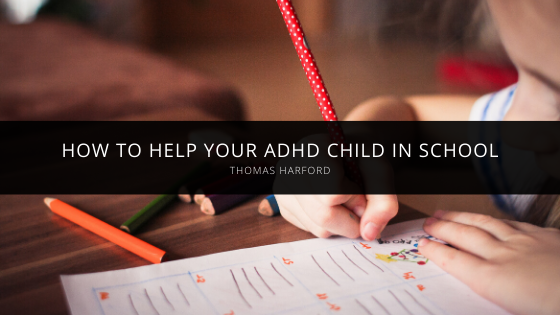Attention-deficit hyperactivity disorder, or ADHD, is a disability that affects up to 11 percent of school-aged children in the U.S. This number rises to 20% when limited to boys. When a child has this condition, there is an enormous responsibility for both the parent and the school to make sure these children are properly educated along with their non-ADHD peers. Here, Thomas Harford looks at some ways parents can help their child who has this disability.
One of the first things Thomas Harford recommends is getting your child diagnosed. The three core symptoms of ADHD are impulsiveness, inattention, and hyperactivity, Thomas Harford says. If your child exhibits these behaviors, the best thing you can do is get him to a doctor for testing. Not only will the testing confirm or deny the disability, Thomas Harford says, but when the child has the official diagnosis, the school is legally required to act. Thomas Harford says one of the best things you can do is get educated yourself about the condition and what resources are available to help your child.
As soon as your child is diagnosed, Thomas Harford says, you need to let the school know. In the U.S., the public-school systems are required to accommodate students with an ADHD disability. This falls under the Individuals with Disabilities Education Act (IDEA)* and guarantees appropriate special education services to the child. The school will set up a meeting to create an Individualized Education Program, often called an IEP, for the child. With the school and the parents working together, the IEP is the single best resource your child can get since it addresses his disability directly.
Tom Harford suggests meeting with the child’s teacher and bringing literature or internet resources. If the teacher does not have experience working with children with ADHD, offer your support, he says. “It’s amazing how many teachers want to help,” he adds, “but they have to idea what to do.” Thomas Harford says providing resources to the teacher or sending them information via email will go a long way towards helping your child be understood in the classroom.
Another thing you’ll want to ensure is regular reporting, Thomas Harford says. While it is not necessary to scrutinize every interaction, it is crucial to have an overall idea of how he is doing in the classroom. Having regular communication between the teacher and the parent will help to watch for anything unusual which needs addressing sooner rather than later. “It’s all about providing the best opportunity for a good education despite any disabilities,” Thomas Harford says. When you have a plan going in and good communication all around, it’s best for everyone.”


